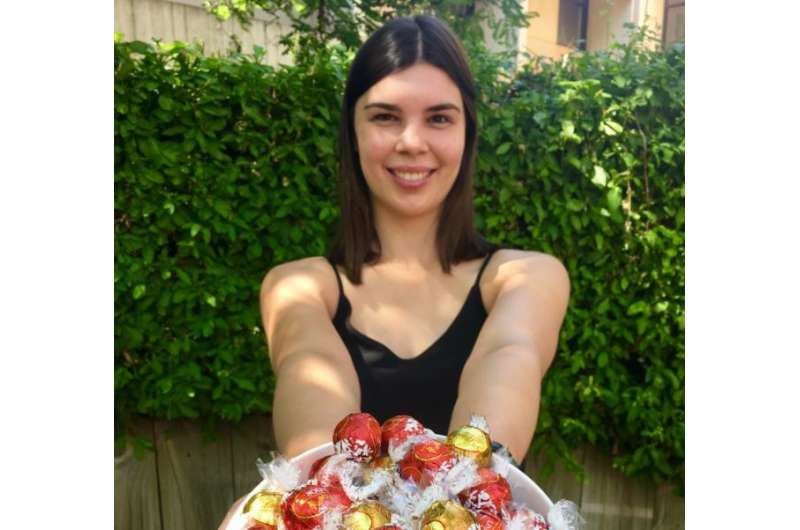Help for chocoholics

Does a bowl full of luscious Lindt balls make you drool? Or can you learn to turn those cravings into other thoughts?
New research by Flinders Psychology PhD candidate Sophie Schumacher gives hope to chocolate addicts, suggesting some easy techniques to cut back on chocolate cravings which can hamper a healthy lifestyle.
The research, published in the latest issue of Appetite, an international journal on eating and drinking behaviour, indicates that people can use self-awareness to fight back and even erase those "chocoholic" thoughts which lead to craving for chocolate.
"If we tackle the issue when it first pops up in your mind – particularly if you are not hungry – then it's much easier than waiting for those cravings to gather force," says lead researcher Ms Schumacher.
"Learn to nip off these cravings at the bud – by giving yourself a constructive distraction such as imaging a walk in a forest – can help to lower the intrusiveness of the thoughts and vividness of the imagery.
"We found it was important to target the initial craving thoughts before they become full-blown cravings."
With practice, it could be as easy as creating an automatic distraction for yourself the moment those niggly chocolate cravings start occurring, she says.
With chocolate recognised as one of the top cravings in western society, cravings occur in two distinct stages: the initial intrusive thought (caused by environmental cues, like pictures) and the subsequent elaboration (where vivid imagery of the craving becomes persistent).
The Flinders research study tested a theory called elaborate-intrusion theory and whether two techniques known as cognitive defusion and guided imagery can reduce chocolate cravings.
Two test groups of young women were involved – one a general sample and the other a group who wished to cut down on their chocolate cravings.
Cognitive defusion targets the first stage of the craving, or when the thought of chocolate first crops up, and taking the initiative to quickly distance yourself from this craving thought – and see it as something which doesn't necessarily have to be followed by action.
The guided imagery technique targets the second stage of the craving, when we start to imagine having chocolate and what it looks, smells and tastes like – and replacing that with another image, for example, a cool, serene place such as a forest or lonely beach.
"We found that cognitive defusion lowered the intrusiveness of thoughts, vividness of imagery before, and craving intensity for both the general test group, and for those who craved chocolate and wished to eat less chocolate," Ms Schumacher says.
Practical tips:
- Become more aware of how your thoughts influence your behaviour is a good first step.
- Bear in mind that thoughts like 'I need chocolate' may not be true, and may not need to be acted upon.
- When imagining an alternative scene, like a walk in a forest or on a beach, be sure to use different senses – imagine sights, sounds and smells. This can help counter your craving-related imagery.
More information: Sophie Schumacher et al. Acceptance- and imagery-based strategies can reduce chocolate cravings: A test of the elaborated-intrusion theory of desire, Appetite (2017). DOI: 10.1016/j.appet.2017.02.012



















